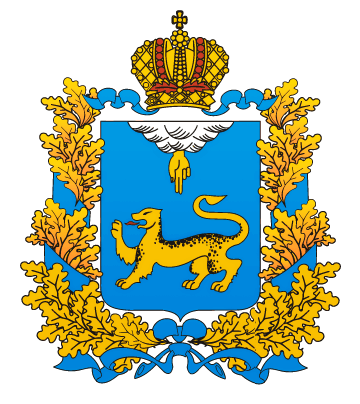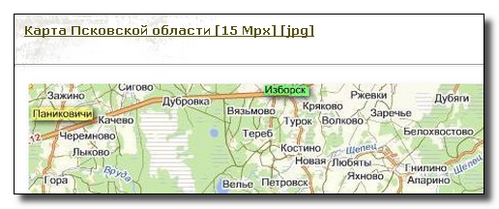Поиск |
|---|
|
|
Лучшая карта: |
|---|
 Уже скачали: 127248 |
Обновлённые карты и обзоры: |
|---|
[ 2 версии] просмотров 921 [ 12 карт] просмотров 17036 [ 6 карт] просмотров 17107 [ 38 карт] просмотров 138619 [ вектор] просмотров 50 [ вектор] просмотров 21 [ подборка] просмотров 16957 [ 10 карт] просмотров 17197 [ 19 карт] просмотров 29417 [ 14 карт] просмотров 16873 [ 9 карт] просмотров 17347 [ 322 Мб] просмотров 29 [ 6 карт] просмотров 17003 [ 3 карты] просмотров 16797 [ 9 карт] просмотров 17010 [ 7 карт] просмотров 17190 [ подборка] просмотров 17002 [ 7 карт] просмотров 16989 [ 10 карт] просмотров 16979 [ подборка] просмотров 17014 прочитали 67808 раз прочитали 38445 раз прочитали 19270 раз прочитали 15929 раз прочитали 38446 раз прочитали 14530 раз прочитали 30906 раз прочитали 39337 раз прочитали 15839 раз прочитали 15297 раз |
Другие версии сайта | ||||
|---|---|---|---|---|
  Форма входа |
Картографический авторский проект fedoroff.net 2025 год | Вы
Гость×|
Статьи | Файлы | Альбомы | Новости | Лучшие | Блог | Карта сайта | Контакты |
Статьи | Файлы | Альбомы | Новости | Лучшие | Блог | Карта сайта | Контакты |
| FEDOROFF.NET » ГЛАВНАЯ » СТАТЬИ » English version » Geography |
Pskov region
|
Просмотров: 2621 Последнее обновление:  As an administrative unit Pskov land developed as follows. Decree of Peter 1 of 18 December 1708 the entire territory of Russia was divided into 8 provinces, which in turn are divided into counties. The current territory of the Pskov region became part of the Ingermaland province, which in 1710 was renamed St. Petersburg. The vastness of the provincial territories forced the government to create intermediate territorial units between the province and district - province. In May 1719 the Pskov and Great Luke were assigned to the category of provincial towns. The structure of the Pskov land , entered counties: Pskov, Gdovskii, Izborsky, Opochka, Ostrovsky, and Pustorzhevsky Zavolochsky. Luki Pskov province and were referred to the St. Petersburg region, and since 1727 - in the Novgorod province.  In 1777 was founded the Pskov Governorship of 10 counties: Velikoluksky, Gdovsky, Luga, Opochetsky, Ostrovsky, Porkhov, Pskov, Pustorzhevskogo (in the same year with the formation of Novorzhev Pustorzhevsky county was renamed Novorzhevsky) Toropetsky and Holmskogo. Pskov was designated as a provincial towns, Gdovskny Luga and counties in 1781 were extracted from the Pskov province and moved to St. Petersburg province. In 1782, the composition of the Pskov Pechersky district stood county, but in 1797 it was re-attached to the Pskov and in small part to Ostrovsky counties. Novorzhevsky county at the same time was divided between Ostrowski, and Porkhov Opochetsky and Holm - between Velikoluksky and Toropetskiy counties. The province was divided into six districts: Velikoluksky, Opochka, Ostrovsky, Porkhov, Pskov and Toropetskiy. In 1802, Holm Novorzhevsky and counties have been restored. In 1823 the Pskov province was ranked as the Baltic provinces, and in 1830 became an independent province in the eight counties: Velikoluksky, Novorzhev, Opochetsky, Ostrovsky, Porkhov, Pskov, and Toropetsky Holmskogo. In this part of Pskov Province existed until 1920, when peace treaties concluded by the Soviet government in Estonia and Latvia, moved to the States of the territory of the Pskov Ostrovsky and counties. March 24, 1924 in Pskov province moved three county Vitebsk: Velizh, Nevel and Sebezhsky. Starting in 1927, the main elements of pre-existing sub-divisions - province, district and county gradually began to be replaced by new - area, district, area. The territory of the Pskov province became part of the Leningrad region. In accordance with the Resolution of the Presidium of the Central Executive Committee on July 18, 1927 the entire territory of the former Pskov province was divided into two districts: Pskov and Velikoluksky. In Pskov district includes the counties fully Pskov, Novorzhevsky, Ostrovsky, Porkhov county without Solecki and parts Gorodovitskoy townships, county Opochka without Ezhenskoy part of the township, part of May Day township Sebezhsky County, Seredkinskaya, Bielsko and Remedskaya parish Gdovsky County, most of the parish Sosedninskoy Luga district. The territory of the Pskov region has been divided into 18 districts: Bezhanitsky, Dedovichi, Dnovsky, Karamyshevskaya, Krasnogorodsk, Kudeversky, Novorzhevsky, Nowosielski, Opochka, Ostrovsky, Palkino, Porkhov, Pskov, Pushkin, Slavkov, Seredkinsky and Chihachevsky. The structure includes a fully Velikoluksky District counties Velikoluksky, Velizh, Nevel, Toropetskiy and Holm, Sebezhsky county without a township of the May Day, a part of the township Ezhenskoy Opochetsky County, As part of the county was formed Velikoluksky 23 districts: Bologovskiy, Velikoluksky, Velizh, Idritsa, Ilinskii, Kunya, Lenin, Loknyansky, Nasvinsky, Nevel, Novosokolnichesky, October, Porechensky, Pustoshka, Rykovsky, Sebezhsky, Soviet, Toropetskiy, Trinity, Usvyaty, Usmynsky , Holm and Tsevelsky. Nevel area 24 November 1928 was divided into two districts - Nevel and Ust-Dolyssky. In 1929, the county Velikoluksky fully joined the newly formed Western Region. In June 1930 the Pskov and Velikoluksky districts have been eliminated. The territory of the areas included in the Pskov District, stayed in the Leningrad region and the territory of the areas which are in Velikoluksky County, remained in the Western Region. In September, 1930, were eliminated parts of the former Velikoluksky County: Bologovskiy, Lovatskaya, Porechensky, Rykovsky. Soviet, Usmynsky, Ust-Dolyssky, Tsevelsky. The territory abandoned areas was united with the neighboring areas.January 1, 1932 have been eliminated Idritsa, Kunya and Nasvinsky areas. With the formation in January 1935, the Kalinin region most of the areas of the former-Velikoluksky District and Bezhanitsky, Krasnogorodsk, Kudeversky Opochka and Pskov regions of the former county became part of the Kalinin region. In March 1935 in the Kalinin region was again restored Velikoluksky district, and March 22, 1935 in the Leningrad region newly restored Pskov District. In Pskov district includes the following areas; Gdovskii, Karamyshevskaya, Lyadsky, Nowosielski, Ostrovsky, Palkino, Pskov, Polnovsky, Seredkinsky, Slavkov, Soshihinsky and Strugi Krasniye. May 11, 1937 was established border Opochka District, which includes Ashevsky, Bezhanitsky, Krasnogorodsk, Kudeversky, Loknyansky, Novorzhevsky, Opochka and Pushkin districts. In May 1938 Velikoluksky District eliminated; Pustoshka, Sebezhsky and Idritsa areas ceded to Opochetsky district. September 19, 1940 was eliminated Pskov District, and all of its parts have moved directly under the Leningrad Executive Committee. February 5, 1941 liquidated Opochka District. Areas that were included in its composition, and went to the Kalinin region. In the period of 1941-1944. territory of the Pskov region was temporarily occupied by Nazi invaders. After the liberation of the Pskov region for the rapid restoration of the national economy and the establishment of a normal life in the liberated areas of the country from the enemy, August 23, 1944 in _sostave RSFSR were organized and Luki Pskov region. As part of the Pskov region initially included 17 districts of the Leningrad region - Gdovskii, Dedovichi, Dnovsky, Karamyshevskaya, Lyadsky, Nowosielski, Ostrovsky, Palkino, Plyussa, Pozherevitsky, Polnovsky, Porkhov, Pskov, Seredkinsky, Slavkov, Soshihinsky, Strugi Krasniye and the three areas of the Kalinin region - Ashevsky (former Chihachevsky) Novorzhevsky and Pushkinskiye Gory (formerly Pushkin). The composition of Luki area includes areas - Bezhanitsky, Belsky, Velikoluksky, Idritsa, Ilyinsky Krasnogorodsk, Kudeversky, Kunya, Lenin, Loknyansky, Nevel, Nelidovskiy, Novosokolnichesky, October, Opochka, Pskov, Ploskoshsky, Pustoshka, Sebezhsky, Serezhinsky, Toropetskiy, Usvyaty and Chelm. March 10, 1945 were established new areas of Luki: Zharkovsky, Podberezinsky, Porechensky Prihabsky and renamed in 1952. in Usmynsky. Also in 1952, formed part of Luki area Ust-Dolyssky area. January 16, 1945 as part of the Pskov region of the associated townships Latvian and Estonian SSR organized Kachanovskii, Pechora and Pytalovsky areas. April 5, 1946 as part of the Pskov region due to downsizing and territories Strugi Krasniye Porkhov districts formed Pavsky area. October 2, 1957 was eliminated Luki area. Districts Bezhanitsky, Velikoluksky, Idritsa, Krasnogorodsk, Kudeversky, Kunya, Loknyansky, Nevel, Novosokolnichesky, Opochka, Ploskoshsky, Podberezinsky, Porechensky, Pustoshka, Sebezhsky, Usmynsky, Usvyaty, Ust-Dolyssky and Holm were transferred to the Pskov region. In January 1958, in the Pskov region were eliminated Kachanovskii, Kudeversky, Nowosielski, Podberezinsky, Pozherevitsky, Polnovsky and Seredkinsky areas. July 29, 1958 from Pskov region transferred Ploskoshsky area of the Kalinin region and Chelm district of the Novgorod region. March 23, 1959 were eliminated Porechensky and Ust-Dolyssky areas, and in October 1959 - Idritsa, Lyadsky, Pavsky, Pytalovsky, Slavkov, Soshihinsky, Usvyaty and Usmynsky areas. At present (1970) The Pskov region is divided into 24 districts: Bezhanitskny, Velikoluksky, Gdovskii, Dnovsky, Dedovichi, Krasnogorodsk, Kunnnsky, Loknyansky, Nevel, Novorzhevsky, Novosokolnichesky, Opochka, Ostrovsky, Palkino, Pechora, Plyussa, Porkhov, Pskov, Pustoshka, Pushkinskiye Gory, Pytalovsky, Sebezhsky, Strugi Krasniye and Usvyaty. Pskov region has significant reserves of various minerals, until discovered manifestations of diamond (Gdovskii district). The explored reserves of peat reach 300 million tons, with production while only 350 of the 3,000 fields installed. Among other resources available: molding and glass sand, refractory and fusible clay, the raw material for the production of mineral pigments, sapropel, which has a wide range of applications - from medicine to construction materials, mud and clay. Attractive is the production of mineral waters for both external and internal to the treatment. Eight proven deposits of mineral water have reserves of more than 5 million cubic meters. m Modern Pskov region - an area in the northwest area of the Russian Federation 55.3 thousand square meters. km. The length of the region from north to south - 380 km from west to east - 260 km. The main feature of the location of the area - the presence of the external borders of Russia (with Estonia - 270 km, Latvia - 214 km, the Republic of Belarus - 305 km). The area is rich in forests, the total area of which is 2,450 hectares. The available resources allow harvest of 3.5 million cubic meters. meters of wood annually (coniferous species - 30%), but in reality only 25-30% of the possible, which opens up a rich landscape of the industry. The area is rich in other natural resources such as clay, sand, sandy limestone, travertine, sapropel, gypsum, peat, loam. The deposits of these minerals are not fully utilized, which involves the development of industries: light, food, peat, manufacture of building materials. Pskov region has a half of agricultural land of North-West Russia. Constitute the foundation of agriculture in cattle breeding, the production of vegetables and potatoes and flax. Companies within the industry are located in almost all cities and regional centers of the region. At high enough quality product prices are 10-15% lower than that of similar products factories in St. Petersburg and the Baltic countries, providing them demand not only in the region but also beyond. Therefore, we have to develop the food industry, The region has a developed transport infrastructure. Highway and railway network, connect it to Moscow, St. Petersburg, Lviv, Odessa, with the capitals of the Baltic States and the ports of Murmansk and Kaliningrad. In Pskov, an international airport for the mid-range passenger and cargo aircraft with a total weight of up to 250 tons Pskov is a river port, which can connect the region with the ports of Estonia on the coast of Peipsi (the largest of them - Tartu). Therefore, great importance is given to the development of transport infrastructure, which is dictated by a unique location in the region (common border with three states) and the distribution of the traffic flow (more than 10% of the traffic flow of Russia). Posed in this field include modernization and opening new lines of transportation. In conclusion we can say that the Pskov region has a high industrial potential, when you combine it with the geographical location (the presence of the external borders of Russia), we get the export development in subsequent years. As an administrative unit Pskov land developed as follows. Decree of Peter 1 of 18 December 1708 the entire territory of Russia was divided into eight provinces, which in turn are divided into counties. The current territory of the Pskov region became part of the Ingermaland province, which in 1710 was renamed St.Petersburg. The vastness of the provincial territories forced the government to create intermediate territorial units between the province and district - province. In May 1719 the Pskov and Great Luke were assigned to the category of provincial towns. The structure of the Pskov land, entered counties: Pskov, Gdovskii, Izborsky, Opochka, Ostrovsky, and Pustorzhevsky Zavolochsky. Luki Pskov province and were referred to the St.Petersburg region, and since 1727 - in the Novgorod province. + дополнительный материал: Источник материала Свободная публикация материалов сайта при условии наличия ссылки на сайт. Здесь общение с автором проекта по вопросам рекламы, развития и поддержки проекта, обмена информацией, авторских прав - в контакты. Почта администратора сайта - evgeniy@fedoroff.net. Статья 29.4 Каждый имеет право свободно искать, получать, передавать, производить и распространять информацию любым законным способом. Перечень сведений, составляющих государственную тайну, определяется федеральным законом. © fedoroff.net  Категория: Geography |
| Просмотров: 2621
| Теги:
|
| |

[ Регистрация | Вход ]
